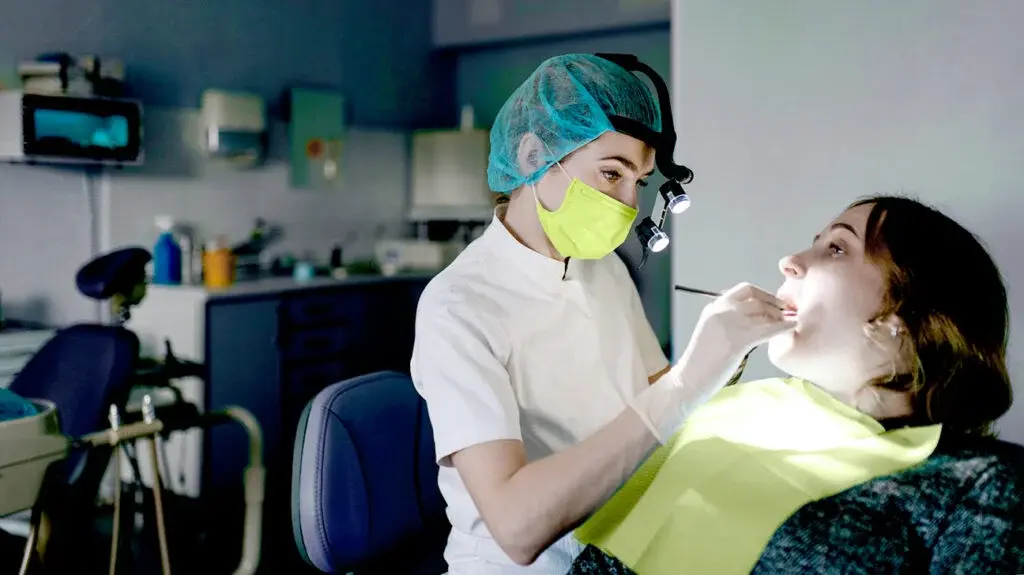Submit Request ...
-
Forums
Why does my tooth still hurt after a filling?

Sensitivity after a dental filling is common, and it typically subsides with time.
However, a person should call their dentist right away if they have extreme pain or if discomfort occurs with other symptoms, such as fever or swelling.
In this article, we look at why a person may have tooth sensitivity after a filling, how to treat it, and when to see a dentist. We also look at other possible causes of tooth sensitivity.
What should I expect after a filling?

A filling is a dental procedure that involves a dentist cleaning away any decay from the tooth and then filling the space with new material.
After injecting a numbing agent around the tooth, the dentist will clean out the decayed area of the tooth, usually with a dental drill. They will then fill the space with gold, silver amalgam, a composite, or porcelain.
Once the numbing agent has worn off, a person may experience sensitivity around the filling.
How does sensitivity after a filling feel?
When a person has a sensitive tooth, they may notice that certain triggers cause a temporary, uncomfortable sensation in the filled tooth or surrounding area. It may feel like a shock of cold or sudden pain that comes on quickly and then goes away.
Possible triggers of tooth sensitivity after a filling include:
1. cold foods or drinks
2. hot drinks
3. air hitting the tooth, such as when breathing through the mouth
4. sugary foods
5. acidic foods and drinks, including fruit, juice, and coffee
6. biting down when eating
Why do fillings cause tooth sensitivity?
Some temporary sensitivity after a tooth filling is common. However, persistent or severe sensitivity after a filling is likely due to other causes that need treating.
Below, we discuss possible causes of this symptom and explain when to see a dentist.
An irritated nerve
Short-term tooth sensitivity after a filling usually occurs because the filling procedure has aggravated or caused inflammation in the nerve inside the tooth.
The tooth’s outer layers, which are the enamel and cementum, usually protect the nerve from exposure. However, fillings — especially deep ones — can get close to the nerve endings and cause irritation and uncomfortable sensations.
As the nerve heals, the sensitivity will go away. This may take a few days or weeks. Once the nerve has healed fully, a person should feel no difference between the filled tooth and the other teeth.
Incorrect bite alignment
A dentist must ensure that the tooth filling lines up with the other teeth in the mouth.
People will often experience some minor sensitivity when biting down in the days following the procedure. This sensitivity will typically go away on its own.
However, when the filling is too tall, it can cause extra pressure as a person bites down. This can cause pain and sensitivity that is often more severe than typical post-filling sensitivity.
If a person experiences severe sensitivity or has difficulty eating or putting their teeth together, they should ask their dentist to check the bite. The dentist may decide to smooth down the high point of the filling to properly fit the bite and eliminate discomfort.
Pulpitis
Pulpitis is inflammation of the pulp deep within the tooth. It can cause tooth sensitivity and pain.
Pulpitis does not regularly occur with minor fillings, but it might happen if:
1. the tooth has had trauma, such as from an accident that resulted in a cracked or broken tooth
2. the cavity was very deep, reaching the inner pulp layer
3. the tooth has undergone multiple fillings or procedures
4. There are two types of pulpitis. Reversible pulpitis refers to mild inflammation where the pulp remains healthy, and the tooth will heal independently. Irreversible pulpitis occurs when there is a damaged nerve that starts to die. In these cases, a root canal is necessary to save the tooth.
A dentist can usually resolve pulpitis with a new filling or a restorative procedure, such as a root canal. A person may also need to take antibiotics to clear any bacterial infection.
Allergic reaction
Some people may experience an allergic reaction to a filling. A 2015 reviewTrusted Source found that amalgam is the filling material that most often causes an allergic reaction.
People may also have an allergic reaction to other materials involved in the procedure, such as the latex in the dentist’s gloves.
How to prevent tooth sensitivity
The impact of a dental filling can cause tooth sensitivity regardless of a person’s preparation.
However, practicing good oral hygiene is the best way to prevent tooth sensitivity.
Following a filling, a person can minimize discomfort by avoiding foods and drinks that are too hot or too cold and foods that are an effort to chew.
How to treat a sensitive tooth
A person may also try the following methods at home to help relieve tooth sensitivity:
✓ taking over-the-counter pain relievers, such as acetaminophen or ibuprofen
✓ using topical numbing ointment designed for the mouth
✓ brushing with gentle, circular strokes on the teeth and gums
✓ avoiding whitening toothpaste and products, which can make sensitivity worse
✓ rinsing the mouth out with water after consuming acidic foods or drinks
✓ avoiding brushing the teeth immediately after eating acidic foods, as doing so may remove more of the enamel
If tooth sensitivity does not improve in the days following a filling, it is important to talk with a dentist. The dentist will need to rule out other potential causes of sensitivity that may not be related to the filling.
When to see a dentist
People should not be alarmed if a tooth is mildly sensitive in the days following a filling. They will usually be able to relieve the discomfort using home remedies and desensitizing toothpaste.
A person should see a dentist right away if the sensitivity worsens, they find it difficult to eat, or they experience other symptoms, such as a toothache or fever.
Please let us know what you think!